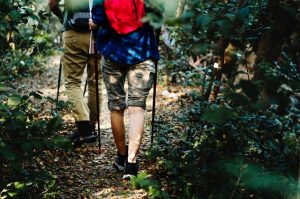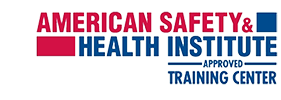 Now that warm weather is here, you’re probably ready to get outside and enjoy it. If you want a bit more exercise and adventure than a simple walk or jog around your neighborhood or local park, Raleigh offers some amazing areas that are perfect an afternoon of hiking. However, it’s easy to get hurt while hiking, and even experienced trailblazers face injuries from time to time. Before you take to the trails, our first aid and CPR training center wants to share some important first aid tips to treat common hiking injuries.
Now that warm weather is here, you’re probably ready to get outside and enjoy it. If you want a bit more exercise and adventure than a simple walk or jog around your neighborhood or local park, Raleigh offers some amazing areas that are perfect an afternoon of hiking. However, it’s easy to get hurt while hiking, and even experienced trailblazers face injuries from time to time. Before you take to the trails, our first aid and CPR training center wants to share some important first aid tips to treat common hiking injuries.
Packing a First Aid Kit for Hiking
Being prepared before you go hiking can be the difference between a minor inconvenience and a major emergency. Make sure your pack has everything you need before you set out, including:
- Food and drink: High-protein snacks, energy bars, and at least 16 ounces of water for each hour of hiking.
- Weather protection: Sunblock, lip balm, hat and sunglasses, extra socks, and a poncho or rain gear.
- Insect repellent
- Pocket knife
- Fully-charged phone
- Collapsible trekking pole (even if you don’t use them actively, they can be used for a splint, act as a crutch, or help make an impromptu shelter,
Plus, you’ll need your first aid kit that, at minimum, should include:
- Wound cleaning: antiseptic wipes, antibacterial ointment
- Wound dressing: adhesive bandages, butterfly closures, sterile pads, gauze roll, and adhesive tape
- Tools: tweezers, blunt-edged scissors
- Medication: ibuprofen, antihistamines, prescription medicine
- Skin care: Aloe gel, Moleskin, anti-itch cream
If you plan on going on hiking longer than an afternoon or in more rough terrain than local hiking spots, you may want to customize your pack with additional tools.
First Aid for Cuts and Scrapes
To prevent scrapes and cuts while you’re hiking, make sure you dress in long pants and sleeves to protect your skin from sharp branches, thorns, and rocks. If you have to use a knife for any reason, cut away from yourself.
If you do get a cut, clean your hands and rinse the wound with water. Then, gently press a sterile gauze pad to the area to stop the bleeding. Once the bleeding has stopped, apply antibacterial ointment and a bandage. If the wound is larger, apply a gauze pad instead of a bandage, securing it with rolled gauze or adhesive tape.
First Aid for Blisters while Hiking
Blisters don’t seem serious, but they can turn a lovely afternoon into a misery, and if you’re a few miles from your end point, a blister can double the length of time it takes to finish your hike. Prevent them by wearing safe, comfortable foot wear and keeping your feet dry at all times. If you notice “hot spots” treat them immediately by applying medical tape or moleskin over them.
If a blister does form, clean it and cover it, and if it breaks, apply antibacterial ointment. Cover it with a donut-shaped Moleskin, and then apply medical tape.
First Aid for Sprains
Sprains and strains are more serious hiking injuries, and the best ways to avoid them are to wear supportive shoes or hiking boots that are in good condition, sticking to clear trails that are within your experience, and watching where you step.
If you do fall and injure your ankle, knee, or wrist, remember the RICE treatment:
- Rest: If it’s not too severe, and you’re in a safe area, take some time to rest.
- Ice: While you may not have an ice pack, a cold water bottle, soaking it in a stream or lake, or wrapping a cold, wet sock or shirt around the area can help.
- Compression: Wrap the affected area in gauze or an ACE bandage
- Elevation: While resting, keep it propped up.
If you have a trekking pole, or there is a large, sturdy branch, you can use it as a splint or a crutch to provide support, but otherwise, if walking is not possible, call for help.
Treating Heat-Related Illness
Raleigh summers can be brutal, and heat-related illness can be life-threatening. Pay attention to the weather, and if there are heat advisories out, consider putting off a hike for another day. Otherwise, stay hydrated, wear light-colored, loose clothing, and avoid hiking during the hottest parts of the day.
Heat exhaustion occurs when your body temperature rises and can lead to heat stroke. Signs of heat exhaustion include:
- Dehydration: thirst headache, fainting, and weakness
- Nausea and vomiting
- Muscle cramps
- Elevated heartbeat
If left untreated, heat stroke can occur, which presents with:
- Core body temperature over 105 degrees
- Rapid heartbeat
- Rapid breathing
- Confusion and disorientation
- Seizures
- Loss of consciousness
Treat heat exhaustion by sitting in the shade, drinking plenty of fluids, using a cool compress, and removing any tight or constricting clothing. If heat stroke occurs, call for assistance immediately, remove constricting clothing and apply cool compresses to the victim.
Sign Up for a First Aid Class in Raleigh to Stay Safe
While most hiking injuries are minor, there are times when more severe injuries happen. CPR Educators offers first aid and CPR classes such as basic life support and HeartCode BLS to help you be prepared for any occasion, even life-threatening situations. Learn more by calling us at (919) 639-4848 or send us a message by filling out our contact form!



